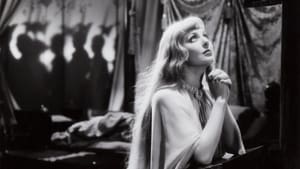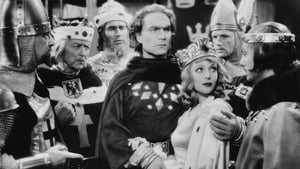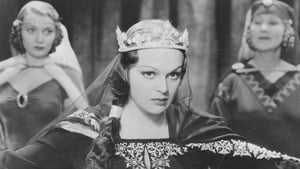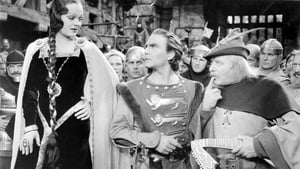Video Sources 0 Views
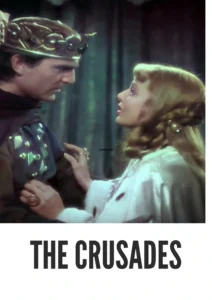
Synopsis
Knights, Battles, and Romance: The Crusades (1935) in Glorious Color

Embark on an epic journey with The Crusades, a sweeping adventure saga from 1935, now beautifully colorized for a visually stunning experience. Starring Loretta Young and Henry Wilcoxon, this film brings to life the grandeur and drama of the historical Crusades. Perfect for fans of classic cinema and historical epics, this HD download offers a chance to witness a legendary era reimagined with vibrant color.
The Crusades Storyline: Faith, Love, and War
The Crusades tells the story of the Third Crusade, focusing on the complex relationship between King Richard I, also known as Richard the Lionheart, and the beautiful Berengaria of Navarre. Richard, driven by his ambition and devotion to the Crusades, initially enters a marriage of convenience with Berengaria to secure political alliances. However, as they face the trials and tribulations of war together, a genuine love begins to blossom between them.The film portrays the grand scale of the Crusades, showcasing massive battle sequences, intricate political intrigues, and the personal sacrifices made by those involved. Richard must contend with treacherous enemies, both on and off the battlefield, while Berengaria struggles to find her place amidst the conflict and prove her worth as a queen. Ultimately, The Crusades is a tale of faith, love, and war, set against the backdrop of one of history’s most significant religious conflicts.
Movie Cast
The film features a talented cast of actors who bring this historical epic to life:
- Loretta Young as Berengaria, Princess of Navarre
- Henry Wilcoxon as King Richard I, Richard the Lionheart
- Ian Keith as Saladin
- C. Henry Gordon as Philip Augustus
- George Barbier as Sanche of Navarre
Movie Genre
The Crusades falls into the genre of historical epic, combining elements of romance, adventure, and war. Its grand scale, elaborate costumes, and dramatic storyline make it a captivating and visually impressive film.
Historical Context
Released in 1935, The Crusades was directed by Cecil B. DeMille, a master of the epic film genre. The film reflects the historical fascination with the Crusades and the larger-than-life figures who participated in them. While taking some liberties with historical accuracy, The Crusades offers a glimpse into the world of medieval warfare and religious conflict, capturing the imagination of audiences during the Golden Age of Hollywood.
Colorization Details
This colorized version of The Crusades has been meticulously restored using modern digital techniques, enhancing the visual appeal while preserving the film’s original grandeur. The colorization process involved carefully analyzing the grayscale tones of the original black and white footage and assigning appropriate colors to each scene. While the specific software used remains proprietary, the techniques employed included advanced algorithms for color palette selection and image enhancement. This painstaking process brings new life to the characters, costumes, and settings, making the story even more engaging for modern audiences.
Technical Details
- Director: Cecil B. DeMille
- Screenplay: Harold Lamb, Jeanie Macpherson, Waldemar Young
- Story: Harold Lamb, Sidney Buchman
- Cinematography: Victor Milner
- Edited by: Anne Bauchens
- Production Company: Paramount Pictures
- Distributed by: Paramount Pictures
- Runtime: 126 minutes
Technical Specifications
- Download Format: MP4
- Resolution: HD (1080p)
- Compatibility: Compatible with most devices, including smartphones, tablets, computers, and smart TVs.
Reviews and Critical Reception
The Crusades (1935) is celebrated for its grand scale, impressive battle sequences, and the performances of its cast, particularly Loretta Young and Henry Wilcoxon. While historical accuracy is debated, the film remains a captivating and visually stunning example of the historical epic genre.
FAQs
- Q: What is The Crusades about?
- A: The Crusades is a historical epic about the Third Crusade, focusing on the relationship between King Richard I and Berengaria of Navarre.
- Q: Is The Crusades (1935) historically accurate?
- A: While The Crusades is inspired by historical events, it takes some liberties with historical accuracy for dramatic purposes.
- Q: Is this version of The Crusades colorized?
- A: Yes, this version has been professionally colorized to enhance the viewing experience.
- Q: What makes The Crusades interesting for film enthusiasts?
- A: The Crusades is a visually stunning example of the historical epic genre, directed by Cecil B. DeMille.
- Q: What is the download format?
- A: The download format is MP4, which is compatible with most devices.
- Q: What resolution is the download?
- A: The resolution is HD (1080p), providing a high-quality viewing experience.
Download Now in HD!
Watch The Crusades Today!
